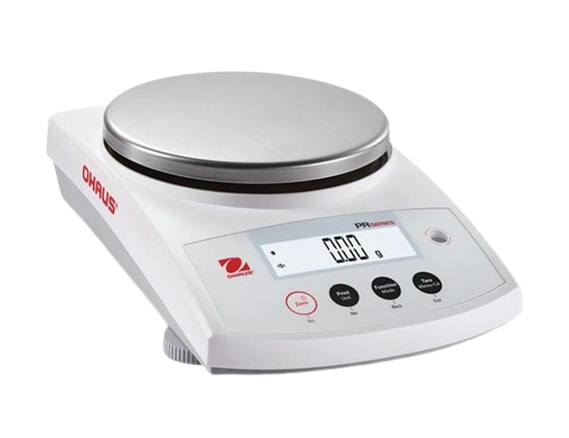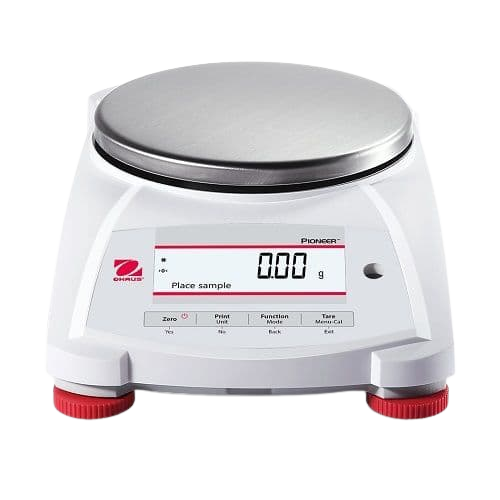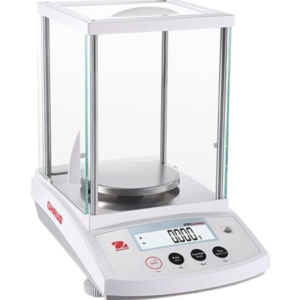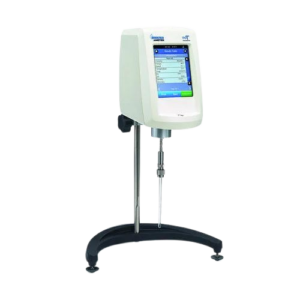Precision Balances: Laboratory balances are precise weighing instruments used in scientific research, analytical chemistry, and other laboratory applications. They are designed to provide accurate measurements of mass and are essential for conducting experiments, preparing solutions, and ensuring the quality and consistency of laboratory processes.
Here are some key points about laboratory balances:
1.Types of Laboratory Balances: There are different types of laboratory balances are as below.
a. Analytical Balances: These balances provide high precision and accuracy, typically measuring to the nearest 0.1 milligram (0.0001 grams). They are often enclosed in a glass case to protect against air currents and dust, as these factors can affect the measurement.
b. Precision Balances: Precision balances offer a lower level of precision compared to analytical balances, typically measuring to the nearest 1 milligram (0.001 grams). They are often more affordable and suitable for general laboratory weighing tasks.
c. Top-loading Balances: These balances are less precise than analytical and precision balances, typically measuring to the nearest 0.01 grams. They are commonly used for less critical measurements, such as weighing bulk chemicals or larger samples.
d. A semi-micro balance, also known as a semi-micro analytical balance, is a precise weighing instrument used in laboratory settings. It is designed to measure small masses with high accuracy and precision.The term “semi-micro” refers to the balance’s capability to measure masses in the range of 0.01 milligrams (mg) to 100 milligrams (mg), or sometimes up to 200 milligrams (mg). This distinguishes it from a microbalance, which can measure even smaller masses in the microgram range.
2. Features and Specifications: Laboratory balances come with various features and specifications depending on the specific model and application. Some common features include:
a. Weighing Capacity: The maximum weight that the balance can measure accurately.
b. Readability: The smallest increment in mass that the balance can display.
c. Calibration: Balances need regular calibration to ensure accuracy. Many modern balances have built-in calibration features or can be calibrated using external calibration weights.
d. Units of Measurement: Balances can measure mass in different units, such as grams, milligrams, ounces, or carats.
e. Draft Shield: Analytical balances often come with a draft shield, which is a transparent enclosure that protects the weighing pan from drafts and helps ensure accurate measurements.
3. Handling and Care: Laboratory balances are delicate instruments that require careful handling and maintenance to preserve their accuracy and longevity. Some best practices include:
a. Avoid exposure to extreme temperatures, humidity, and direct sunlight, as they can affect the performance of the balance.
b. Handle samples and weights with clean and dry hands or appropriate tools to prevent contamination.
c. Regularly clean the weighing pan and any other parts that come into contact with samples to avoid cross-contamination.
d. Follow the manufacturer’s instructions for calibration, maintenance, and troubleshooting.
4. Legal Metrology: In some countries, laboratory balances used for commercial purposes, such as in pharmaceutical or food industries, must comply with legal metrology regulations. These regulations ensure that the weighing instruments are accurate and meet specific standards.
It’s important to note that the information provided here is a general overview, and specific balances may have additional features or considerations depending on their make and model. Always refer to the manufacturer’s documentation and guidelines for detailed information about a particular laboratory balance







Reviews
There are no reviews yet.